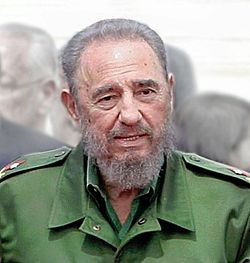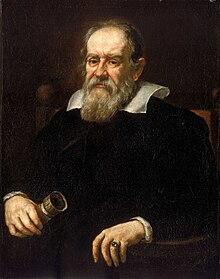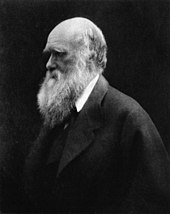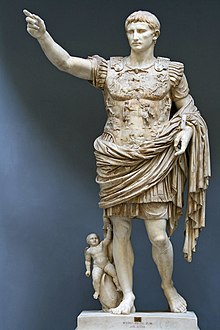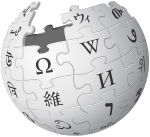Wednesday, 7 March 2012
March 7: Telephone was patented (1876)
Alexander Graham Bell was awarded a patent (#174,465) for the telephone in the United States in 1876. Before this invention, there had been many ideas, conceptual models and patent caveats about speaking telegraph, however, they were not practical and Bell's invention was granted a patent. Prior to this patent, Bell awarded a patent for transmitter and receivers for electric telegraphs. The first successful transmission of clear voice using a liquid transmitter was done on March 10, 1876.
Monday, 5 March 2012
March 5: First meeting of the Homebrew Computer Club (1975)
The Homebrew Computer Club, one of the earliest computer hobbyist usergroup in Silicon Valley, had its first meeting at the garage of Gordon French in Menlo Park, California, on March 5, 1975. French was one of the founders of the club along with Fred Moore. The founders of Apple Inc., Steve Wozniak and Steve Jobs, were members of the club and Wozniak made the debut of his early prototype of an Apple computer and Jobs persuaded Wozniak to sell this computer to the public, which led to the foundation of Apple Computer, as described in Walter Isaacson's Steve Jobs biography. Adam Osborne and Lee Felsenstein of Osborne Computer Corporation were members of the club. Jerry Lawson, the designer of the Fairchild Channel F video game console, was also a member of the club. The club was very instrumental to grow the silicon valley culture.
Friday, 2 March 2012
March 2: Compact Disk was released in the US market (1983)
Compact Disk (CD) players and disks with 16 titles from CBS Records were released in the US market on March 2, 1983 by Sony and Philips. This was the milestone moment of digital audio revolution. It revolutionized the way of storing music and data and opened the era of optical storage devices. It was later expanded to store data such as CD-ROM, CD-R, CD-RW, Video CD, Super Video CD, PhotoCD, and PictureCD. Before the release in the US market, it was only available in Japan since October 1982. The CD technology was evolved from LaserDisc that was release by Sony in September 1976.
Thursday, 1 March 2012
March 1: Yahoo! was incorporated (1995)
Yahoo! Inc. was founded by Jerry Yang and David Filo in January 1994 and was incorporated on March 1, 1995. The company started its web directory service with a website named "Jerry and Dave's Guide to the World Wide Web" in April 1994. Over time, Yahoo! acquired many internet companies and developed many services, however, some of the services were not so successful or discontinued, to name a few, Geocities, AltaVista, del.icio.us, MyBlogLog. Yahoo! is currently best known for its services like web portal, search, mail, news, photo and video sharing, groups, answers and maps. The largest portion of the company's revenue is from search advertising. Yahoo! is one of the pioneers of the World Wide Web and has been shaping the Internet industry.
Wednesday, 29 February 2012
February 29: "Gone with the Wind" won 10 Oscars (1940)
The 1939 movie Gone with the Wind received 10 Academy Awards (8 competitive, 1 honorary and 1 technical) in the 12th Academy Awards on February 29, 1940. Of the 17 competitive awards, the movie had 13 nominations. This was the first movie that won more than five Academy Awards. The movie was one of the earliest major movie shot in colour and won the first Academy Award for Best Cinematography. The movie was directed by Victor Fleming and from a screenplay by Sidney Howard based on the Pulitzer-award winning novel of the same name by Margaret Mitchell. Among others, Clark Gable, Vivien Leigh, Leslie Howard, Olivia de Havilland and Hattie McDaniel were the main characters. It was the longest American sound movie with 3 hours and 44 minutes. It is the highest-grossing movie after inflation adjustment.
Tuesday, 28 February 2012
February 28: DNA structure was discovered (1953)
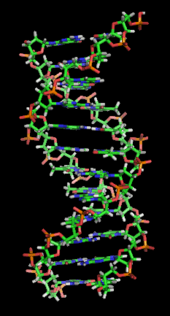 |
| DNA structure |
Monday, 27 February 2012
February 27: The British Labour Party is founded (1900)
The Labour Party was founded from the Trade Union Congress, which was well attended by various working-class and left-wing organizations, in 1900. The party is a centre-left social democratic and democratic socialist political party in the UK. Labour formed its first government in 1924 under the leadership of Ramsey MacDonald - the first Labour prime minister. The latest Labour government was led by Tony Blair and Gordon Brown between 1997 and 2010, which is known as the "New Labour" period. Blair is the longest serving Labour prime minister (for 10 years) and the only person to have led three consecutive victories in the general election. The party is a member of the Socialist International. Labour is current official opposition under the leadership of Ed Miliband.
Sunday, 26 February 2012
February 26: Barings Bank collapsed (1995)
Barings Bank was the oldest merchant bank in London until its collapse in 1995 due to a series of speculative investment involving futures contracts, managed by Nick Leeson of its Singapore office, which resulted in a loss of £827 million ($1.3 billion). Barings Bank was founded in 1762 and had survived financial crises such as the Great Depression and World Wars. The bank had been playing an important role in the British financial market until the collapse. The corruption and greed were one of the main causes of the failure. The bank was acquired by ING Group of the Netherlands.
Saturday, 25 February 2012
February 25: JP Morgan incorporated US Steel (1901)
JP Morgan and the attorney Elbert Gary founded United States Steel Corporation (US Steel) in 1901 and incorporated on February 25, 1901 by combining Andrew Carnegie's Carnegie Steel Company with Gary's Federal Steel Company and William Henry Moore's National Steel Company. The company became the first billion dollar company in the world. US Steel was the largest steel producer and largest corporation in the world at one time. It acquired oil companies during 1980s and now a majority portion of the company's revenue and profits are from its energy subsidiaries. US Steel and the energy companies are now under the holding company USX Corporation.
Friday, 24 February 2012
February 24: Fidel Castro retired from the public positions (2008)
In 2008, Fidel Alejandro Castro Ruz, former head of Cuba, retired from the leadership positions of Cuba. He stepped down from all leadership positions including the President, the Secretary-General of the Non-Aligned Movement and the first Secretary of the Communist Party of Cuba. Castro had been in the leadership positions of Cuba for 55 years. He is a Marxist-Leninist and converted Cuba into a one-party socialist state.
Thursday, 23 February 2012
February 23: ISO was founded (1947)
The International Organization for Standardization (ISO), an international standard-setting body composed of representatives of national standardization bodies, was founded on February 23, 1947. The ISO is headquartered in Geneva, Switzerland and has 162 member nations. The official languages of the ISO include English, French and Russian. Standards of the ISO are the most widely adopted in the world.
Wednesday, 22 February 2012
February 22: The first cloned mammal Dolly was anounced (1997)
 |
| Remains of Dolly |
Tuesday, 21 February 2012
February 21: The Peace Symbol was designed (1958)
Monday, 20 February 2012
February 20: The Met was opened (1872)
The Metropolitan Museum of Art (the Met) was opened at 681 Fifth Avenue in Manhattan, New York, on February 20, 1872. The museum was founded in 1870 by a group of American citizens including financiers, businessmen and artists. Over time, the museum bought and accommodated a significant amount of valuable art works and it has grown significantly. As of 2010, the Met's facade measures almost a quarter mile and its area covers over two million square feet. Currently it houses over 2 million works.
Sunday, 19 February 2012
February 19: Alan Turing's paper on stored-program comuter (1946)
Alan Mathison Turing, the father of computer science, presented a paper describing detailed design of a stored-program computer on February 19, 1946. Turing had worked on the design of the Automatic Computing Engine (ACE) at the National Physical Laboratory of the UK between 1945 and 1947. This paper is based on the work of ACE and the computing machines used at the Bletchley Park. In February 1947, Turing wrote a report 'Intelligent Machinery', which introduced the question of whether or not it is possible for machinery to show intelligent behaviour - this is later named "Turing test".
Saturday, 18 February 2012
February 18: Statue of Liberty patented (1897)
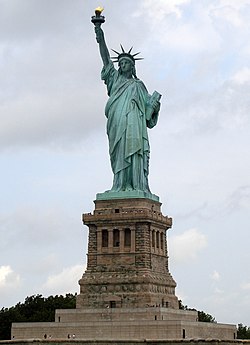 |
| Statue of Liberty |
Friday, 17 February 2012
February 17: Newsweek was launched (1933)
 |
| The first issue of Newsweek |
Thursday, 16 February 2012
February 16: First bulletin board went online (1978)
 |
| Ward Christensen and the CBBS server |
Wednesday, 15 February 2012
February 15: Galileo Galilei was born (1564)
Galileo Galilei, an Italian inventor, physicist, mathematician, astronomer and philosopher, was born on February 15, 1564. He improved the telescope and discovered the four largest satellites of Jupiter. His support for the heliocentrism, which was introduced by Copernicus, caused great discomfort to the church and he ended up denying his scientific belief in an investigation by the Roman Inquisition. Galilei also improved scientific devices like compass, thermometer and microscope. He passed away on January 8, 1642.
Tuesday, 14 February 2012
February 14: ENIAC was released to the public (1946)
 |
| ENIAC |
Monday, 13 February 2012
February 13: Apollo Computer was incorporated (1980)
 |
| Apollo DN330 workstation |
Sunday, 12 February 2012
February 12: Charles Darwin was born (1809)
Charles Robert Darwin, an English naturalist, was born on February 12, 1809. He published his seminal book "On the origin of species" in 1859, after his voyages on HMS Beagle. He developed a theory of evolution, later called Darwinism, and provided its evidence. The theory of natural selection nailed his idea. His theory has been widely adopted, however, the controversy around Darwinism also never stops. He died on April 19, 1882 at age 73 and was honoured by ceremonial funeral at Westminster Abbey, where he was buried near Isaac Newton. Darwin has been regarded as the one of the most influential people in human history. His influence is not limited to the area of natural science but to social science, philosophy, art, ... everywhere.
Saturday, 11 February 2012
February 11: University College London was founded (1826)
University College London (UCL) was founded on February 11, 1826 as the first university established in London. It is the first university in England to admit students regardless of the religion or gender. UCL became one of the two founding colleges of the University of London, founded in 1836, along with King's College London. The University of London is a federal university made up of 19 separate colleges and 12 research institutes and it is the largest university in the UK by the number of full-time students, with over 135,000 students and 50,000 in the international programs. UCL is the oldest and largest constituent college in the University of London. Notable alumni of the UCL include Mahatma Gandhi, John Graham Bell, Rabindranath Tagore, to name a few.
Friday, 10 February 2012
February 10: Deep Blue defeated Kasparov (1996)
 |
| IBM Deep Blue |
Thursday, 9 February 2012
February 9: David Wheeler (1927) and Roger Needham (1935) were born
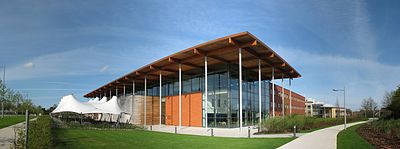 |
| Computer Laboratory, University of Cambridge |
Wednesday, 8 February 2012
February 8: Standard Time proposed (1879)
 |
| Fleming memorial plaque: Inventor of Standard Time |
Tuesday, 7 February 2012
February 7: The Maastricht Treaty signed (1992)
 |
| European Union |
Monday, 6 February 2012
February 6: Jack Kilby filed the first patent for the integrated circuit (1959)
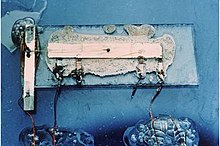 |
| Jack Kilby's original integrated circuit |
Sunday, 5 February 2012
February 5: BBC pips began broadcasting (1924)
 |
| The pips in time interval |
Saturday, 4 February 2012
February 4: Facebook was launched (2004)
Facebook, the most used social network service globally, was launched on February 4, 2004. Facebook was founded by Mark Zuckerberg, a Harvard dropout, with his college roommates and fellow students. The story around the foundation of the company and conflicts among the founders inspired the movie The Social Network. As of December 31, 2011, the service has 845 million active users and it is the second most accessed web site in the US according to the Nielsen Media Research study. Facebook filed for a $5 billion initial public offering on February 1, 2012. The IPO would value the company between $75 billion and $100 billion, which would be the largest Internet IPO in the world.
Friday, 3 February 2012
February 3: Tulip mania collapsed (1637)
 |
| Tulip price index during tulip mania |
Thursday, 2 February 2012
February 2: First Groundhog Day recorded (1841)
In Berks County, Pennsylvania, the first Groundhog Day was recorded in 1841. The story behind the day is, if it is cloudy when a groundhog peeps out of its burrow, spring will come early. If it is sunny that day, the winter will stay for another six weeks. This story has a German origin. Groundhog Day is celebrated in the US and Canada. The largest Groundhog Day is held in Punxsutawney, Pennsylvania, partially because of the 1993 movie Groundhog Day, which was set in the town.
Wednesday, 1 February 2012
February 1: The Black Maria was built (1893)
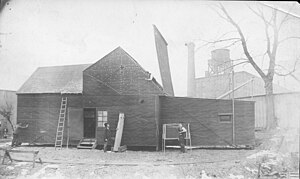 |
| The Black Maria |
Tuesday, 31 January 2012
January 31: The first primate in space (1961)
 |
| Ham was greeted by the Commander of the recovery ship. |
Monday, 30 January 2012
January 30: The Beatles' final live performance (1969)
Sunday, 29 January 2012
January 29: Karl Benz patented the first gasoline-driven automobile (1886)
 |
| Benz's Motorwagen |
Saturday, 28 January 2012
January 28: Lego patented its brick design (1958)
The design of Lego brick, which is still being used and sold, was patented by the Lego Group at 1:58pm on January 28, 1958. The Lego Group began at the workshop of Ole Kirk Christiansen in Billund, Denmark and the name Lego came from the Danish phrase leg godt meaning play well. After the design was patented, it took five years to find the right material for Lego bricks, which is ABS (acrylonitrile butadiene styrene) polymer. This was the start of the legendary construction set toy. The bricks produced then are still compatible with current bricks. Lego bricks are manufactured with great precision and sturdiness. Lego bricks are one of the most popular and enduring toys in the world over generations .
Friday, 27 January 2012
January 27: Wolfgang Amadeus Mozart was born (1756)
Wolfgang Amadeus Mozart, the musical genius, was born in Salzburg in 1756. Mozart was the most influential and most popular composer of the Classical era. He composed over 600 works including operas, symphonies, concertos, chamber music and choral music. He visited Vienna in 1781 and spent the rest of his life. He showed us what maturity and style of music can be. He was a hard worker and left numerous works. Mozart died young at his age of 35. Mozart's works were first cataloged by Ludwig von Köchel in 1862 and the catalogue has been repeatedly updated. The work is referenced by the abbreviation "K" (Köchel number).
Thursday, 26 January 2012
January 26: Lotus 1-2-3 was released (1983)
 |
| Lotus 1-2-3 for DOS |
Wednesday, 25 January 2012
January 25: The League of Nations was founded (1919)
 |
| The League of Nations |
The League of Nations was the first international organization whose mission was to maintain world peace. It was founded after the First World War as a result of Paris Peace Conference and was headquartered in Geneva. There are 42 founding members and 24 members were remained until the dissolution of the League in 1946. The United States never joined the League. When it was the largest, there were 58 member states. The League tried to disarm around the world and intervene international conflicts, but the League did not have armed forces and it became its critical limitation. The League kept failing to deal with international conflicts and it eventually became dissolved in 1946. After the Second World War, the United Nations took over its role and the principal allies became the permanent members of the United Nations Security Council. Though the League of Nations was idealistic but it had done many activities promoting human rights and peace around the world and many of these sub-organizations were absorbed by the United Nations.
Tuesday, 24 January 2012
January 24: Modigliani passed away (1920)
 |
| Self-portrait (1919) |
Monday, 23 January 2012
January 23: Men descended into the deepest point on earth (1960)
 |
| Location of Challenger Deep |
Sunday, 22 January 2012
January 22: Apple's 1984 commercial was aired (1984)
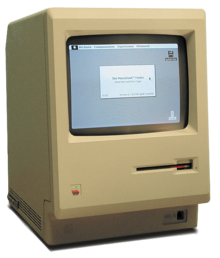 |
| Apple Macintosh |
Saturday, 21 January 2012
January 21: The first nuclear-powered submarine was launched (1954)
 |
| USS Nautilus |
Friday, 20 January 2012
January 20: Hong Kong island was occupied by the British (1841)
 |
| Hong Kong island |
Thursday, 19 January 2012
January 19: The first computer virus was released (1986)
 |
| Infected boot sector by (c)Brain |
Wednesday, 18 January 2012
January 18: The Met hosted a jazz concert for the first time (1944)
The Metropolitan Opera House in New York city hosted a jazz concert for the first time in its history. The performance was named as Esquire Jazz Concert since Esquire magazine sponsored the concert and the concert featured jazz giants of the time: Louis Armstrong, Benny Goodman, Lionel Hampton, Artie Shaw, Roy Eldridge and Jack Teagarden - simply the best in jazz at the time. A symbolic recognition of jazz as a genre of quality music.
Tuesday, 17 January 2012
January 17: UN Security Council held its first session (1946)
 |
| UN Security Council Chamber |
Monday, 16 January 2012
January 16: Beginning of the Roman Empire (27 BC)
Gaius Julius Caesar Octavianus is granted the honorific title Augustus (the revered one) by the Roman Senate and became the first emperor of the Roman Empire on January 16, 27 BC. Augustus reigned the Roman Empire until his death on August 19, AD 14 for 40 years and 215 days. Born Gaius Octavianus Thurinus, he was posthumously adopted by his great-uncle Gaius Julius Caesar via his last will and testament in 44 BC and was officially called Gaius Julius Caesar. The official title as the Emperor was Gaius Julius Caesar Augustus. After the assassination of Julius Caesar, Octavianus formed a military dictatorship, known as the Second Triumvirate, with Marcus Antonius and Marcus Aemilius Lepidus and then defeated the the two: Lepidus was driven into exile and Antonius committed suicide after the defeat at the Battle of Actium by Agrippa in 31 BC. Octavianus then restore the appearance of the Roman Republic and spent four years to determine the framework by which a formally republican state can be ruled by a sole ruler, which resulted in the Roman Empire.
Sunday, 15 January 2012
January 15: Wikipedia went online (2001)
Wikipedia, a free online encyclopedia, has been online since January 15, 2001. Wikipedia is run by the contributions of volunteers around the world and virtually anyone can contribute to the content creation, update and verification - the content creation process is very collaborative. Wikipedia has versions in multiple languages and there are currently 20 million articles - 3.8 million articles in English. Wikipedia is one of the most influential information source on the Internet. The authority of the content is often challenged due to the collaborative content creation process, however, it has been frequently referenced by the Internet users and the collaborative mass-sourcing is often regarded as more trustworthy approach than the conventional content creation. The service is supported by the non-profit Wikimedia Foundation.
Subscribe to:
Posts (Atom)






